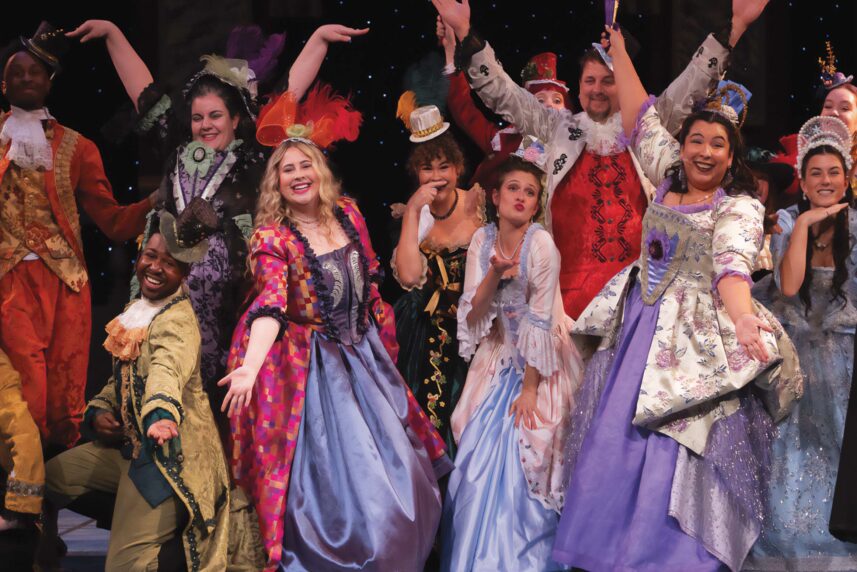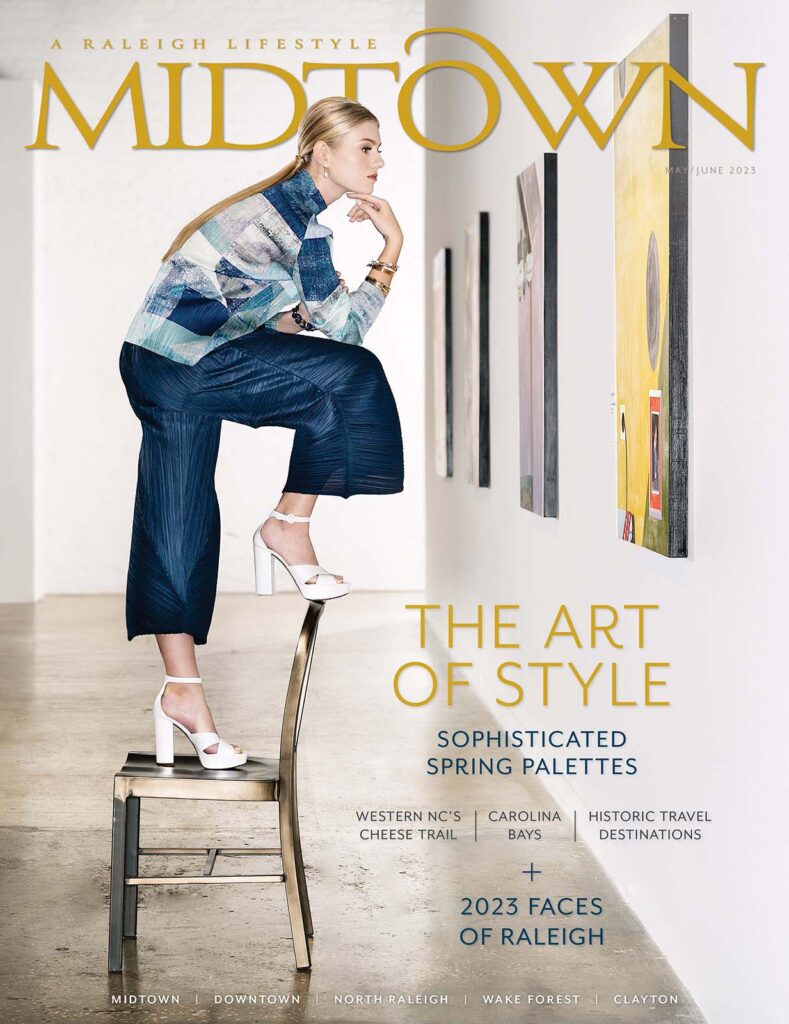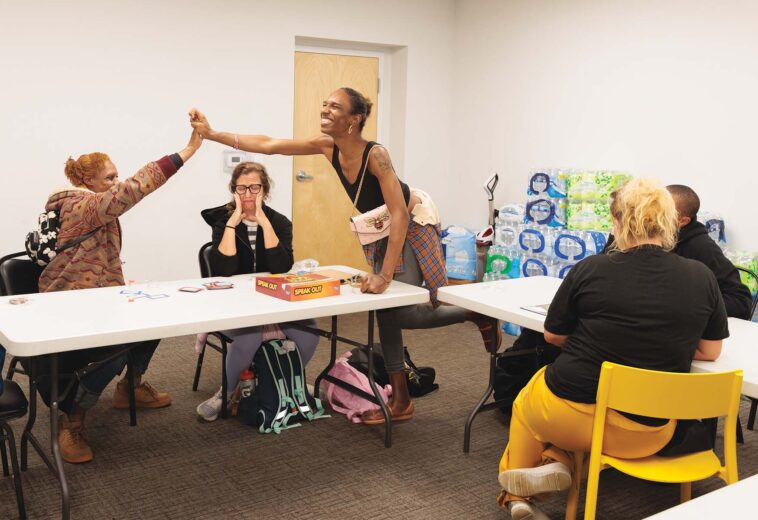Article:
BY ELIZABETH BRIGNAC | PHOTOS COURTESY OF THE RALEIGH LITTLE THEATRE
Attending a performance of “Cinderella” at Raleigh Little Theatre (RLT) is like going to see “The Nutcracker” for some Raleigh families—an integral part of the holiday season. Susan Holbrook’s family has attended every year since 1985. “We began going the second year that they had the production,” says Holbrook, “and we’ve been every year since. Now I have a granddaughter who is 13 … She was 5 weeks old the first time she went to see ‘Cinderella.’”
“Cinderella” is a 90-minute family musical that RLT has been producing every Christmas since 1984. Set during the holiday season, the musical follows the story of an independent-minded Cinderella. “The way it is told gives Cinderella agency in her own future,” says Michele Weathers, RLT’s executive producer. “She isn’t waiting for Prince Charming to come and rescue her. She’s got ideas and thoughts of her own about what she wants her life to be.” The show doesn’t have an intermission. “You can lose little ones at intermission,” says Weathers. The musical is therefore held to a tight 90-minute run to avoid losing short attention spans.
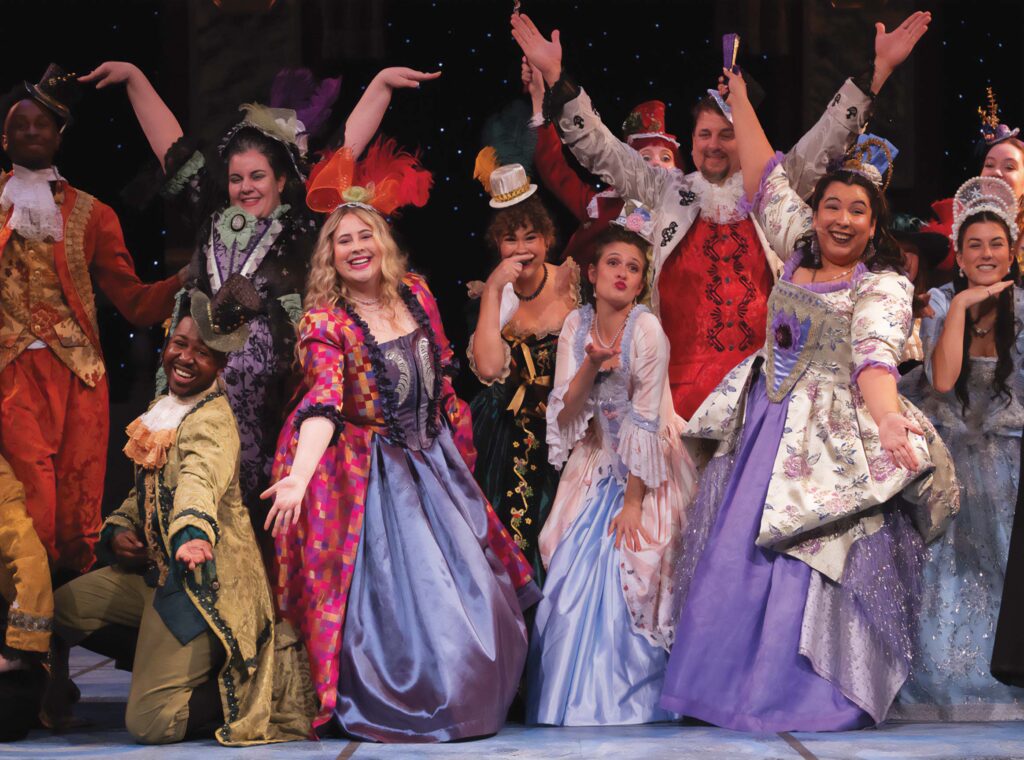
Over time, the RLT version of “Cinderella” has developed its own traditions. For example, it incorporates references to Raleigh that were not in the original script. When the prince seeks to try the glass slipper on all the women of the kingdom, two reporters show the queen and the prince trying the shoe on patrons at Krispy Kreme, Meredith College and other recognizable local spots. These and other Raleigh-area references, as well as special songs, dances and set pieces, characterize the RLT “Cinderella” experience, and people expect to see them every year.
Some actors and actresses have played particular roles for so long that they become part of the tradition. Susan Holbrook’s family enjoyed Jo Brown in the role of the Fairy Godmother for many years, for example. And audiences loved Dennis Poole and Tim Cherry’s comedic portrayal of the evil stepsisters from 1998 through 2019. “By the time they retired, they were ad-libbing. They brought their own personalities into the characters,” says Holbrook.
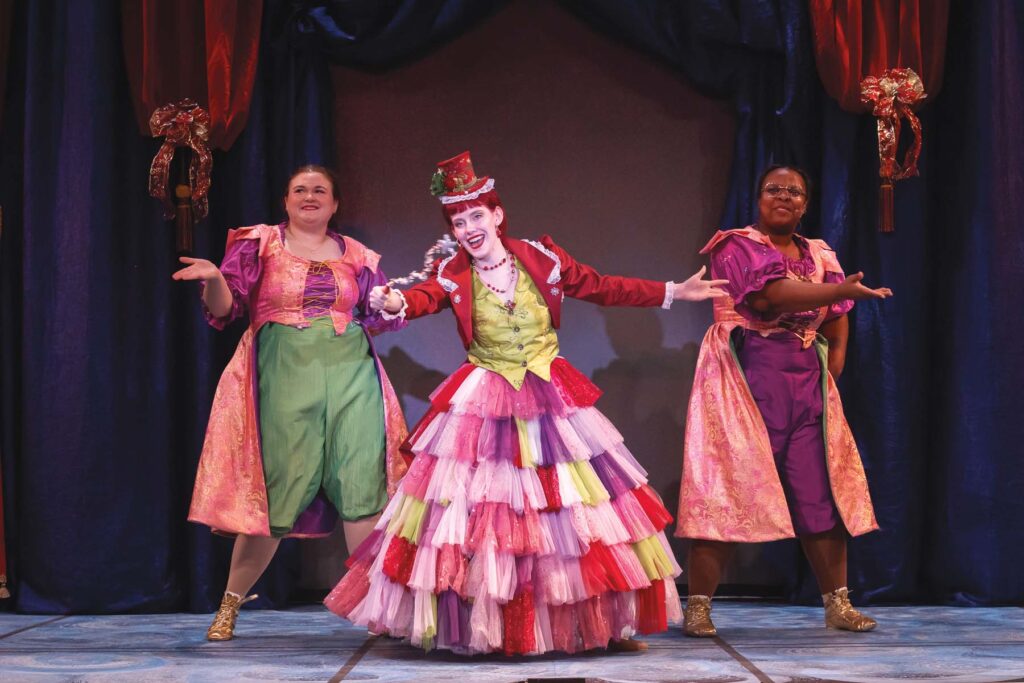



ABOVE, TOP TO BOTTOM: Nunna Noe as the Fairy Godmother in RLT’s 2023 production of “Cinderella,” flanked by her helpers. Benaiah Barnes as King Darling III with his pages in the 2019 production. The children of the town and other townspeople in the 2023 production. Natasha Gore as Queen Darling III in the 2023 production.
CHANGES OVER TIME
The first performance of “Cinderella” took place in 1984 and was planned as a single holiday season offering. Art director Haskell Fitz-Simons, who was new to RLT at the time, directed it. “It was his baby,” says Catherine Lambe, RLT’s archivist and longtime backstage volunteer. The show proved so successful that they repeated it until it became a holiday tradition.
Originally, the musical was designed in the slapstick, exaggerated tradition of Christmas pantomimes. Over time, “the show has changed from panto and more into traditional theater,” says Weathers. “Which means … that the roles have become much more traditional, and the comical pieces of it have become much more contemporary.”
For example, in 2019, the stepsisters were cast with actresses in the roles instead of actors—a move that drew some protests. “These two gentlemen [Dennis Poole and Tim Cherry] had done it for so long and were a draw … because they were in some ways the last piece of that panto [approach to the musical],” says Weathers. But both men were ready to retire from the roles, and other aspects of the production had shifted to a more contemporary style of comedy, so when RLT recast the roles, they cast women.
The way Cinderella meets the prince has also shifted. “It used to be that they never interacted until she went to the ball,” says Lambe. Eventually, they added an early scene in which the prince meets Cinderella in the marketplace. Their relationship begins with a conversation rather than with his seeing her across the ballroom floor. Lambe attributes the change to a younger generation’s distrust of the old love-at-first-sight trope. “These days, kids think, ‘OK, that’s ridiculous that you just sort of fall in love with somebody at a ball without ever having any connection or conversation with them before.’ So now, they have that scene where they interact and they sort of like each other,” she says.

“CINDERELLA” IN 2024
Some changes to the production have been made to move the musical forward with the times. But change has also been the natural result of different people taking their own approaches to the production over the years. Haskell Fitz-Simons directed “Cinderella” for his entire career at RLT, so for a long time, the show took a fairly uniform approach. “Haskell passed away in 2013, and since then the show has had different directors over time,” says Weathers. “And each director has put their own spin on it.”
These diverse approaches have brought in some fun changes—the stepsisters’ making their entrance to Beyonce’s “Single Ladies (Put a Ring on It),” for example—but problems have emerged as well. “It left us with a show that didn’t have enough connectivity in the story. It was more like vignettes of the story, because the costumes were somewhat different each year, and the music was somewhat different … It lacked a thorough artistic line,” says Weathers Changing the approach each year also has meant that designers and costumers need to consider new ways to integrate or build sets and costumes for each different version of the play, which has created difficulties.
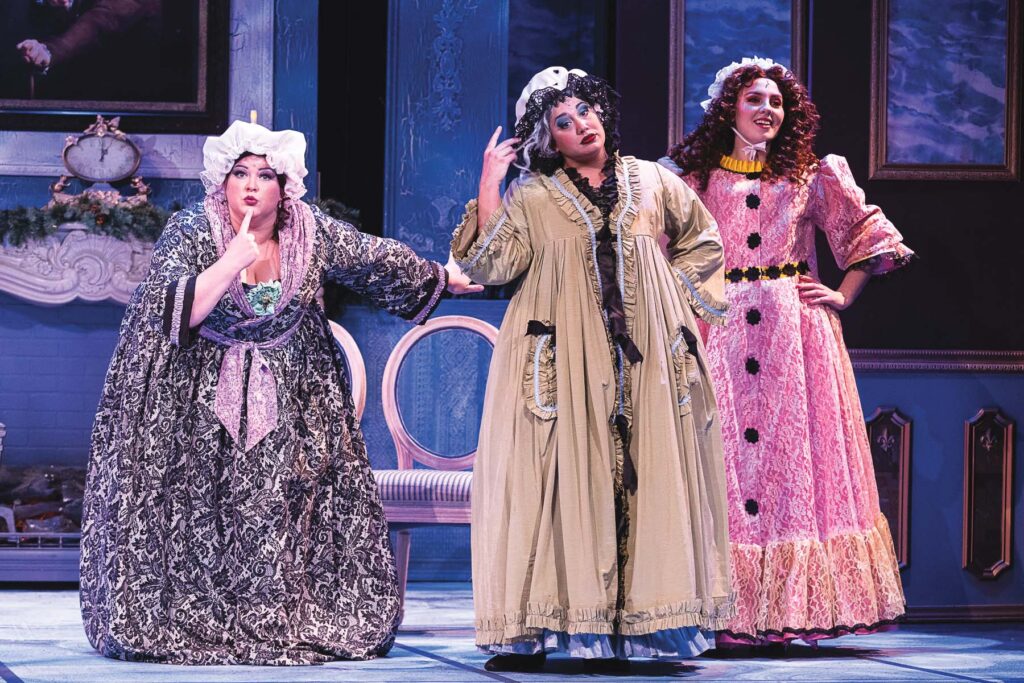
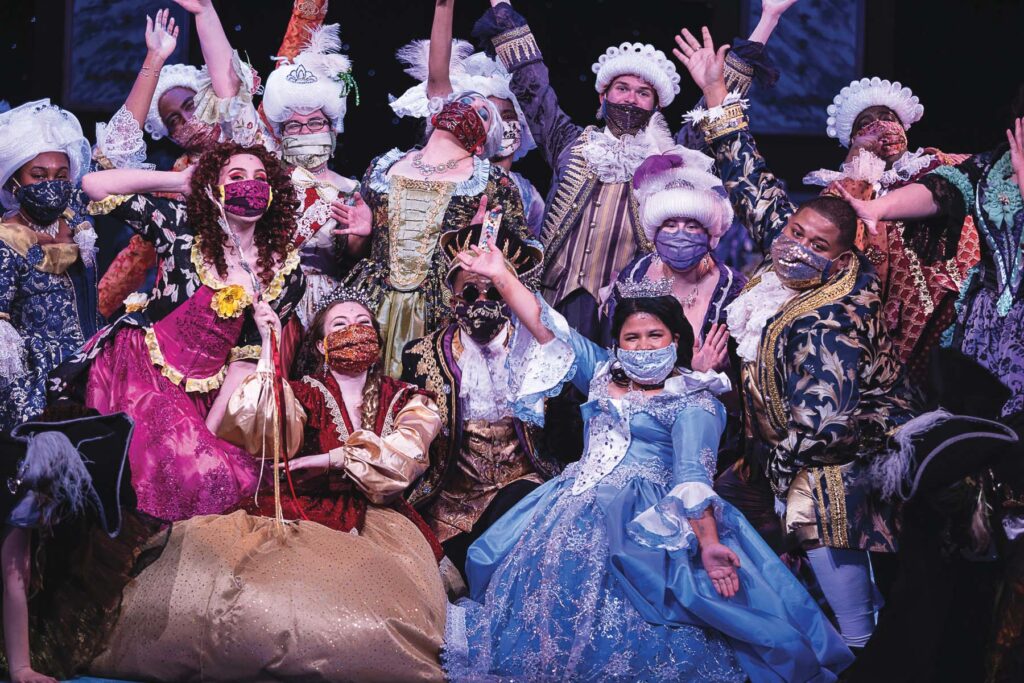
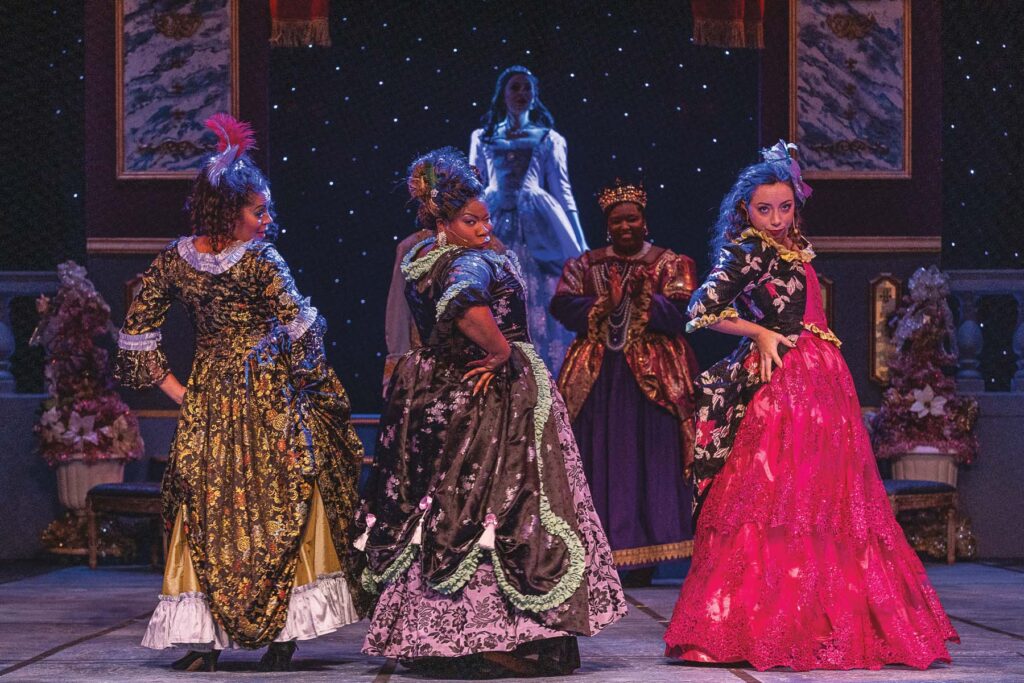
ABOVE, TOP TO BOTTOM: Leigh Howell as Stepmama in the 2021 production, flanked by Cinderella’s stepsisters, Rachel Veazey as Gertrude and and Emma K. Johnson as Henrietta. The cast performs the Sneeze Polka wearing masks in the 2021 production. Roni Nicole (center) as Stepmama in the 2022 production, flanked by Gertrude, played by Emily Steinhoff James (left) and Henriettta, played by Olivia Roe.
For these reasons, 2024’s “Cinderella” is focusing on creating a consistent RLT version of the musical that will preserve the best elements of past performances and remain in place for the foreseeable future. “I’ve been charged with trying to clean up the script … and make it a little more focused,” says this year’s director, Ruthie Martinez. “Over the years, ad-libs have made their way into the script, and [other additions]. So we have tried to iron the script back out and focus it.” “I was referencing different incarnations of ‘Cinderella’ over the years,” she adds, “and different directors have taken different takes … I pulled what I feel is the most streamlined—and fun and happy.”
Martinez is using contemporary children’s theater and retaining some traditions of English pantomime to inspire her approach to the material. “I want to keep it light and fun and peppy … moving. Make the jokes land and have broad characterization,” she says. Since this is a fairy tale version of an 18th-century world, she is using historic English dances to inspire her work, as well as reimagined history shows like Netflix’s “Bridgerton.” “‘Bridgerton’ is a heightened, fantasy version of [Regency England]. I’m trying to bring that color and pizzazz,” says Martinez. Weathers plans for 2024’s streamlined “Cinderella” to be the version RLT uses moving forward. “We’re not telling anyone else’s story of ‘Cinderella,’” she says. “This is very particular to Raleigh Little Theatre, as it has always been.” She adds, “We need to make our ‘Cinderella’ a ‘Cinderella’ for the ages.”
